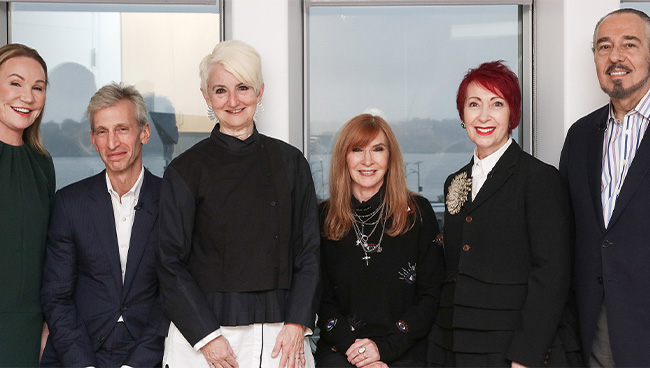[ Photos by Rebecca Smeyne, courtesy of Pratt Institute ]
WSL joined leading designers at Pratt Institute’s Design Symposium to discover the “new normal” in fashion, home design and retail and how to reach increasingly educated shoppers. Hint: Get out of the studios and design around the new shopper values.
It’s Time to Redesign Design
When consumers have unprecedented access to information and good design, the definition of normal may renew every day.
This was the message at the fourth annual Pratt Design Symposium, “Designing for the New Normal,” on Oct. 29: Shoppers have changed and it’s no longer enough for retailers to respond – designers have to as well.
Many are. WSL Strategic Retail’s Wendy Liebmann joined three experts at the Symposium to explore this phenomenon. With her were fashion designer Nicole Miller, luxury interior designer Sandra Nunnerley and Anthony Barzilay Freund, editorial director of 1stdibs, an online marketplace for art, jewelry and home furnishings.
The foursome led an in-depth discussion about appealing to an increasingly educated shopper who, thanks to the availability up-to-the-minute information, now knows what good design is all about – and expects it. We left the presentation carrying three lessons.
Lesson 1: Shoppers Expect Happiness
Traditional design may follow hemlines and silhouettes, but the new values leading it are those that define happiness, Liebmann said. These values include financial stability, reduced stress and greater wellbeing.
“Shoppers aren’t just buying ‘things,’ ” she said. All aspects of the shopping experience should support that.
This is good news. It means designers have many ways to deliver happiness, just as shoppers are finding more ways to attain better design.
“Everyone has access to everything, anywhere, so the entire shopper experience – not just the goods –needs to be designed around their core values,” Liebmann said following the event. “Design now has to be easy, immersive, personalized, and you have to make it worth it.”
This task extends from the brand image to the products sold to the physical (and digital) selling environment, she said. Retailers, and designer, must rethink the entire shopper experience.
Liebmann pointed to what Target has accomplished in 20 years by offering unique but accessible design to shoppers of all socioeconomic backgrounds. How Casper uses design to solve the major challenge of getting a good night’s sleep, including delivering a mattress up the stairs. And how Nike has normalized design innovation by enabling shoppers to customize their shoes to their express needs.
Lesson 2: Designers Have to Offer More than Luxury
As shoppers grow better informed, they are less impressed by expensive price tags. Instead, they expect designers and retailers to transparently support those values they find important. Merely saying a product is sustainable, for example, isn’t enough. The brand has to have a story to prove it, or shoppers won’t buy it.
“Be authentic, because your customers need to trust you,” Miller told attendees.
To do this, designers have to get out of the studio and immerse themselves in shopper expectations – even if designing for a Kardashian, Miller said. She should know; Miller has been designing for uptown and downtown tastes for nearly 40 years.
Interior designer Nunnerley, in a similar vein, is collaborating with the Rug Company to make her designs available to the global market. The partnership does so by inviting everyone to customize their own designs, from more affordable to high-end price points.
“This generation is more educated and has more access to information and want to buy quality products too,” she said.
By providing accessibility to all, Nunnerley is, in essence, redesigning her authenticity.
Lesson 3: Retail Must be Credible to be Sustainable
Sometimes, however, the designer or retailer has to convince the shopper that a high price point is worth the investment. This takes credibility.
1stdibs does this by offering a seamless way for seekers of fine design to connect with reputable sellers of distinct luxury items, as evidenced by its broad network of buyers and sellers that communicate at an average distance of 2,000 miles. 1stdibs further justifies its price points by offering compelling and authoritative lifestyle content that builds trust.
That feeling of trust is then carried to its select merchandise offerings. A well-designed piece of furniture, Barzilay Freund said, will never go to waste. As he put it: “Good design is sustainable.”
We couldn’t agree more, especially when it comes to the shopper experience. Today, good design delivers on all the values of happiness.


